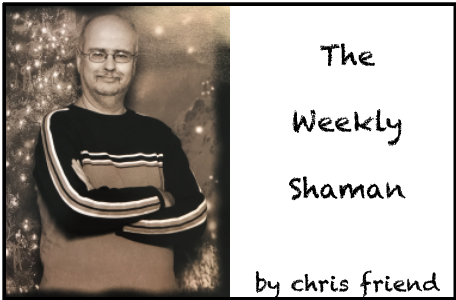
Hello and happy spring from Mars!
In these politically correct times the gypsies prefer to be called the Rom or the Romany. But for the sake of this article I will use the more common term of gypsy. The gypsies were given this title when in Eastern Europe they were known as “those little dark people who look Egyptian.” The term became so common that the Romany began using it themselves as a way of connecting to the great magical powers of the ancient Egyptians. I refer to these great nomadic people as the gypsies because it’s the term most familiar to many of us. The gypsies apparently left Northern India about a thousand years ago, perhaps even further back. They were known as great magician priests, well-schooled in the occult. So vast was their knowledge of supernatural forces that they were often viewed with suspicion. The gypsies were gifted in fortune telling and showmanship. Their knowledge of the supernatural helped them contribute much of the folklore about vampires and werewolves.
The gypsy people had their own superstitions concerning the dead and the dead’s ability to return and torment the living. It has been suggested that most of the gypsy folklore has its roots in the ancient Hinduism of their native India. The gypsies always make certain to bury their dearly departed in the proper way to stop them from haunting the living. But very little is written about gypsy fairy lore.
The Keshalyi are considered the good fairies of gypsy lore. Keshalyi means “spindle,” these fairies being associated with spinning as well as magic. Said to be very long-lived, they are ruled by their queen, Ana (Sanskrit for “nourishment”). She was forced to marry the demon king, Locolico. Like the Hebrew Lilith, she bore many monstrous children, who ruled the Underworld. Finally she gave birth to Poreskoro, a child so hideous that it scared Ana’s husband back to the Underworld.
The demon husband agreed to let Ana govern the gentler race of fairies, but on condition that all female Keshalyi be sent to the Underworld at the age of 999. Queen Ana still rules over a beautiful palace and will show herself on special occasions. She often takes the form of a great gold toad, a popular guise for fairies and witches. Frogs and toads have a strong association with the Underworld and the moon. Since they develop from tadpoles, they signify transformation and magic, and, in that form, grant wishes.
Back around Halloween the SyFy channel showed the unusual vampire film Let Me In. Directed by Matt Reeves (who also directed one of my favorite monster movies, Cloverfield), the film’s main character is a small boy (Koda Smit-McPhee) who is mercilessly bullied by a gang of adolescents. In moves a young girl (Chloë Grace Moretz), who becomes the boy’s next-door neighbor and eventual girlfriend. The bullying sequences remind me of Brian De Palma’s Carrie. Soon the little girl’s true vampiric nature becomes clear. Even though many traditional vampire elements are in place, such as not being able to enter a house without being invited in, this is still pretty original horror. Although it’s an English-language remake of the Swedish Let the Right One In, I consider this an excellent horror film.
